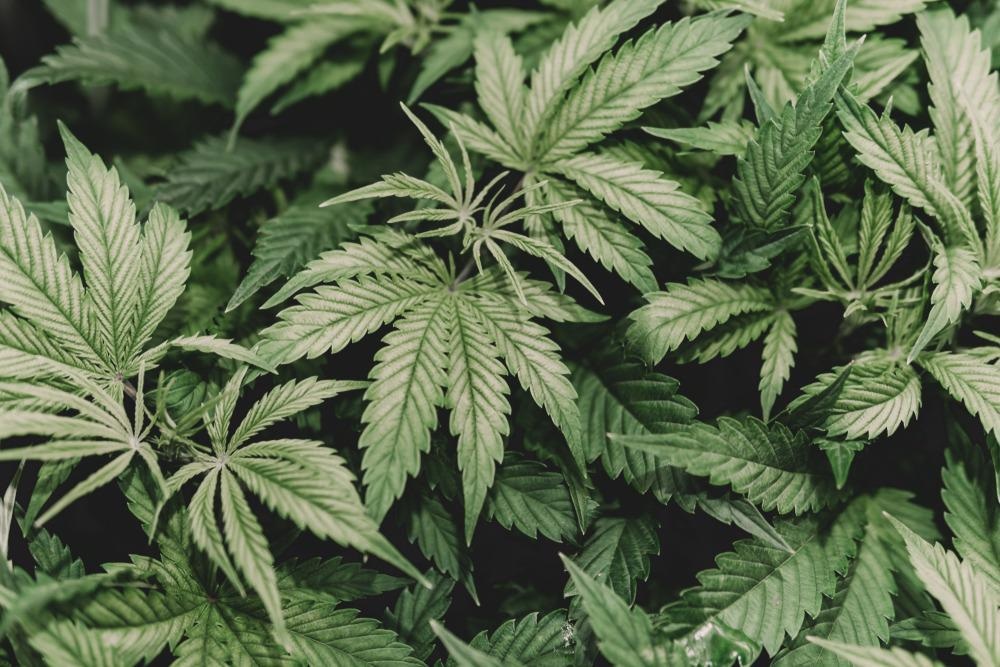Cannabis, which is a flowering plant, has been used for therapeutic, medicinal, and recreational goals. The main advantage of microwave-assisted extraction in cannabis analysis is the continuous-flow operation at atmospheric pressure, allowing for higher biomass volumes to be performed in less time than conventional extraction methods, with enhanced extraction efficiency.

Image Credit: Dmytro Tyshchenko/Shutterstock.com
Conventional Cannabis Extraction Methods
Conventional organic solvent extraction, supercritical CO2 extraction, and pressurized gas (hydrocarbon) extraction are the three typical extraction methods that are currently being used for the commercial extraction of cannabis.
Conventional organic solvent extraction is the simplest and most traditional method for extracting active compounds from cannabis. This classical method is typically performed through maceration in organic solvents such as methanol, ethanol, chloroform, and ether. The extraction using organic solvents will produce a product, which is consisted of different substances, including some unwanted compounds that can dissolve together with the cannabinoids. Extraction at high temperatures usually results in the degradation of heat-sensitive substances.
The main disadvantages of the conventional organic solvent extraction are associated with the great input ratios of biomass-solvent and implicitly to the high solvent amount to be separated from the extracts and recycled and to the co-extracted substances, including waxes, fats, and pigments, making more complex downstream processing steps.
Supercritical fluids represent alternatives to traditional organic solvents that are suitable for different extractions. If material is both pressurized above its critical pressure (Pc) and heated above its critical temperature (Tc), it will be in its critical state and therefore there are no distinct gas and liquid phases. The specificity of this method depends on the physicochemical properties of the solvent, which can be adjusted by a rise of temperature and/or pressure beyond its critical values.
Supercritical CO2 extraction, which applies supercritical CO2 (74 bar, 31°C) in a batch operation, is a common cannabis extraction method. Supercritical CO2 extraction, albeit non-flammable and non-toxic, needs very high-pressure values to be used. Additionally, supercritical CO2 extraction has low efficiency and thus it is not conducive to high throughputs. It is also a non-environmental friendly method. The mandate to perform decarboxylation on the cannabis biomass upstream the extraction step will increase total costs and lead to the loss of some light volatile terpenes.
Hydrocarbon extraction is the most common method that uses liquefied gases such as n-butane, n-propane to be pressurized into liquids as solvents for cannabinoid extraction. Pressurized gas (hydrocarbon) extraction has the advantage of using gases to maintain in liquid phase at low pressure and to get rid of them from the system at the end of the extraction process via subtle heat resulting in extracts with low traces of residual solvents. This extraction step is achieved in batch, creating cannabis concentrates.
Although this method is effective, it is unfavorable for consumer and medicinal purposes, due to the risk of contamination of solvents. One of the major concerns is the safety issue owing to the high explosivity/flammability of the hydrocarbon solvents used. The scale-up of supercritical CO2 extraction and pressurized gas (hydrocarbon) extraction can only be achieved by the addition of multiple machines.
Microwave-Assisted Extraction
Microwave-assisted extraction is different from the conventional extraction methods because the extraction step takes place as an outcome of the volumetric heating contrary to transferring heat from the surface inwards, which can make the process more uniform and efficient due to controlling temperature and contact time precisely. The extraction using microwaves takes place as the result of the cell structure changes happened by electromagnetic waves.
Microwave-assisted extraction is based on pressure-enhanced mass transfer. Microwave-assisted extraction leads to rapid pressure buildup within cells resulting in a pressure-driven mass transfer of actives. Microwave-assisted extraction is very quick and not limited by an equilibrium state. In another word, the transfer will continue as long as energy is used.
The instant volumetric heating performed with microwaves is more uniform, efficient, and less prone to overkill than inwards transferring heat from the surface, even if there is no change in cell structure. The main advantage of microwave-assisted extraction is controllability. The capacity to immediately use and turn off the heat source as required produces a great difference to the product quality and also the production cost. The absorption of microwave energy is selectively achieved through the residual water found in the biomass cells. Short extraction times, reduced solvent requirements, and fewer extraction stages are also advantages of microwave-assisted extraction.
Sources:
- Chemat, Farid, et al. "A review of sustainable and intensified techniques for extraction of food and natural products." Green Chemistry 22.8 (2020): 2325-2353.
- Gallo-Molina, Ada C., et al. "Extraction, isolation and purification of tetrahydrocannabinol from the Cannabis sativa L. plant using supercritical fluid extraction and solid phase extraction." The Journal of Supercritical Fluids 146 (2019): 208-216.
- Moreno, Teresa, et al. "Extraction of cannabinoids from hemp (Cannabis sativa L.) using high pressure solvents: An overview of different processing options." The Journal of Supercritical Fluids 161 (2020): 104850.
- Płotka-Wasylka, Justyna, et al. "Extraction with environmentally friendly solvents." TrAC Trends in Analytical Chemistry 91 (2017): 12-25.
- Radoiu, Marilena, et al. "Microwave-Assisted Industrial Scale Cannabis Extraction." Technologies 8.3 (2020): 45.
- Veggi, Priscilla C., Julian Martinez, and M. Angela A. Meireles. "Fundamentals of microwave extraction." Microwave-assisted extraction for bioactive compounds. Springer, Boston, MA, 2012. 15-52.
Further Reading
Last Updated: Feb 25, 2022